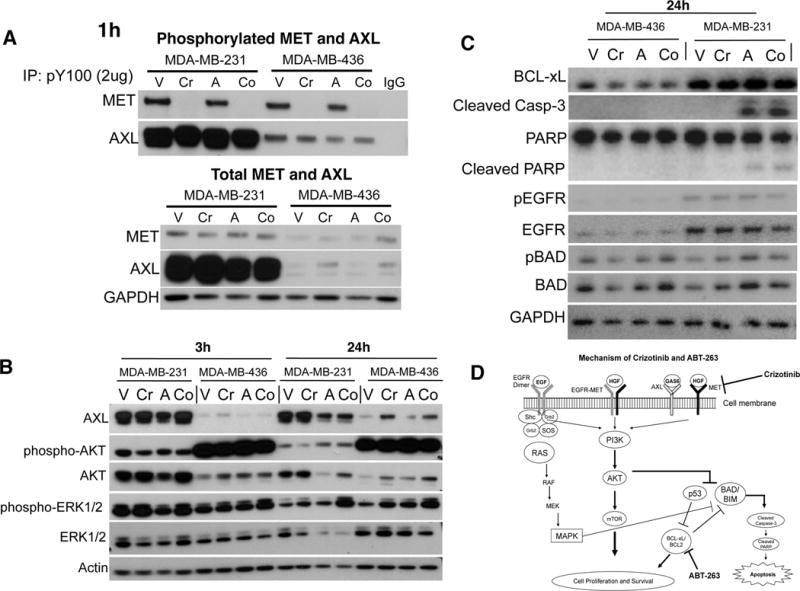Figure 6.

Mechanism of action of ABT-263 and crizotinib. MDA-MB-231 cells in which crizotinib-ABT-263 elicited highest synergistic response and MDA-MB-436 cells that were least sensitive were treated with either vehicle (V), 1μM crizotinib (Cr), 1μM ABT-263 (A), or their combination (Co) for 1, 3 or 24h. A: To determine phosphorylated MET and AXL levels, phosphorylated proteins were immunoprecipitated with anti-phospho-tyrosine (P-Tyr-100), using IgG as control, and then immunoblotted with anti-MET and anti-AXL antibodies. Total MET and AXL were directly immunoblotted using respective antibodies using GAPDH as internal control. B: Effect of treatments on the downstream activated (phosphorylated) levels of AKT and ERK1/2 were determined at 3h and 24h, using actin as internal control. C: To determine the effects of drug treatments on apoptotic markers and EGFR activity, relative levels of BCL-xL, cleaved caspase-3 and PARP, total and phosphorylated BAD (pBAD) and EGFR were determined by immunoblotting after 24h treatment exposure. D: Proposed mechanism of action of the crizotinib-ABT-263 combination. Crizotinib inhibits MET activity and MET dependent RTK activity and downstream signaling. In contrast, ABT-263 inhibits BCL-xL and BCL2, thereby enabling proapoptotic proteins to trigger apoptosis indicated by cleavage of caspase-3 and PARP. When combined, crizotinib and ABT-263 act synergistically resulting in enhanced inhibition of TNBC cell growth and apoptosis.
